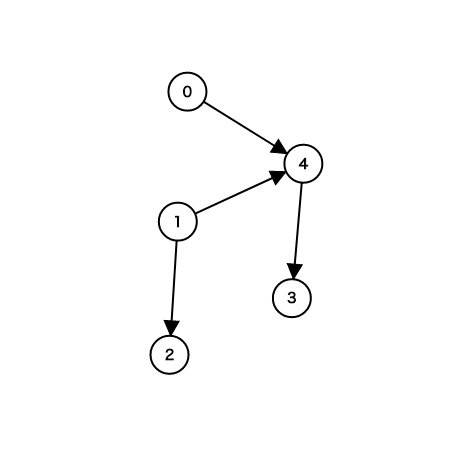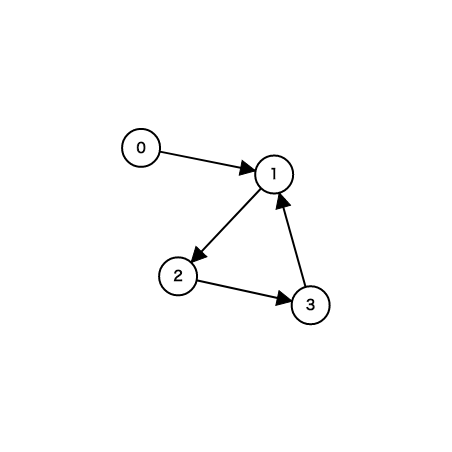C++ トポロジカルソート
トポロジカルソートを求めるのと、ついでに閉路がない (DAG) かの判定をする
テンプレート
#include <cassert>
#include <iostream>
#include <stack>
#include <vector>
using namespace std;
// FIXME: graphをグローバル変数にしているのどうにかしたい
vector<int> graph[200010];
bool topologicalSort(int V, int E, vector<int> &order) {
assert(order.size() == 0);
// トポロジカルソートした結果をorderに格納して返す. 返り値はDAGならtrue
vector<int> indegree(V); // 200000とかだと遅い? 厳しそうならグローバル変数にする
// 入次数の初期化. ほんとは読み込み時にやったほうが効率が良いけど許容する
for (int v = 0; v < V; ++v) {
for (int nv : graph[v]) ++indegree[nv];
}
stack<int> st;
for (int v = 0; v < V; ++v) {
// 入次数0の点をstackにいれる
if (indegree[v] == 0) st.push(v);
}
while (st.size() > 0) {
int v = st.top(); st.pop();
order.push_back(v);
for (int nv : graph[v]) {
--indegree[nv];
if (indegree[nv] == 0) st.push(nv);
}
}
return order.size() == V;
}
// vector
template<typename T> ostream& operator<<(ostream& s, const vector<T>& v) {
int len = v.size();
for (int i = 0; i < len; ++i) {
s << v[i]; if (i < len - 1) s << " ";
}
return s;
}
int main() {
int V, E;
cin >> V >> E;
for (int i = 0; i < E; ++i) {
int a, b;
// 0-indexとする
cin >> a >> b;
// 点a -> 点bの辺をはる
graph[a].push_back(b);
}
vector<int> order;
bool is_dag = topologicalSort(V, E, order);
cout << "This graph is ";
if (is_dag) { cout << "DAG" << endl; }
else { cout << "not DAG" << endl; }
cout << order << endl;
}
利用例
% g++ -std=gnu++1y -O2 topological-sort.cpp -o run
% cat 1.in
5 4
0 4
1 4
1 2
4 3
% ./run < 1.in
This graph is DAG
1 2 0 4 3% cat 2.in
4 4
0 1
1 2
2 3
3 1
% ./run < 2.in
This graph is not DAG
0
